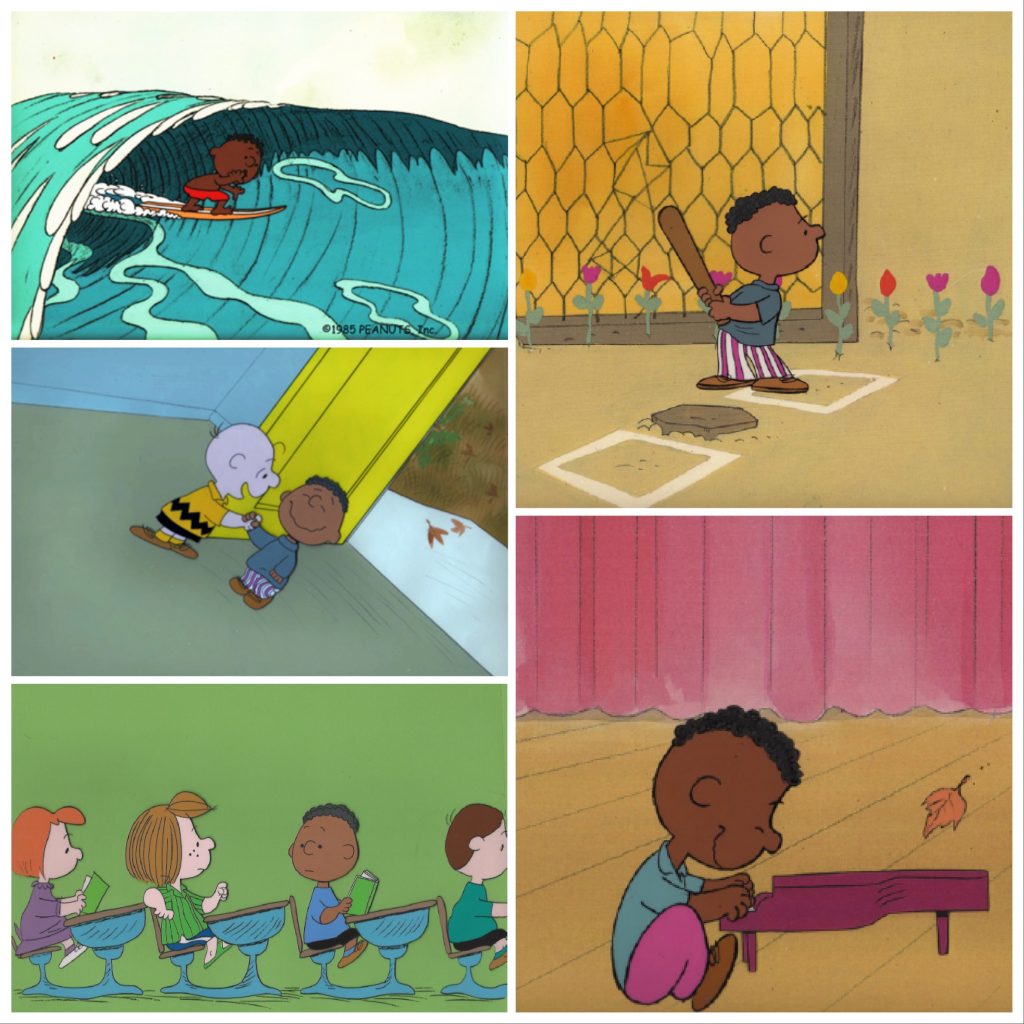Ah, the art of Franklin…When Franklin made his first appearance in a Peanuts comic strip on July 31st, 1968, he did it without any fuss. He showed up at the beach, having found Charlie Brown’s beach ball. “Is this your beach ball?” were his first words. He notices Chuck is attempting to make a sandcastle, but, as Franklin says, “It looks kind of crooked.” to which Charlie replies, “I guess maybe where I’m from I’m not famous for doing things right.”

The next day, on August 1st, 1968, the second strip appeared. In it, Franklin and Charlie Brown are building a better sandcastle together, creating a nice metaphor I hope we can all get behind.

On August 2nd, the third day in a row Franklin makes an appearance, Charlie asks if Franklin can come over and spend the night. Friendship officially started!

In all the years between that first appearance and the last time an original Charles Schulz Peanuts comic appeared in print on February 13th, 2000, Franklin never made fun of or said a bad word to Charlie.
This blog is called The Art of Franklin, not just because ArtInsights got some great original art from the Peanuts specials featuring Franklin (shameless plug but also rare art! yay!!), but because there is definitely an art to Franklin. He may not be the most verbose member of the Peanuts gang, but he is beloved by children and former children all over the world. The fact that he’s entirely positive as a character, smart, a good athlete, a great friend, inquisitive, and self-assured, is the subject of some discussion. Is he too perfect to be interesting? As one of literally millions of Franklin fans, I’d say absolutely not. Though he would have been more three dimensional with some foibles, it’s no surprise Franklin, or as we learn many years later, Franklin Armstrong, was a pillar of the Peanuts community. Charles Schulz was very much a supporter of civil rights, but he had serious reservations that, as a white comic strip artist, he could do justice to a Black character.
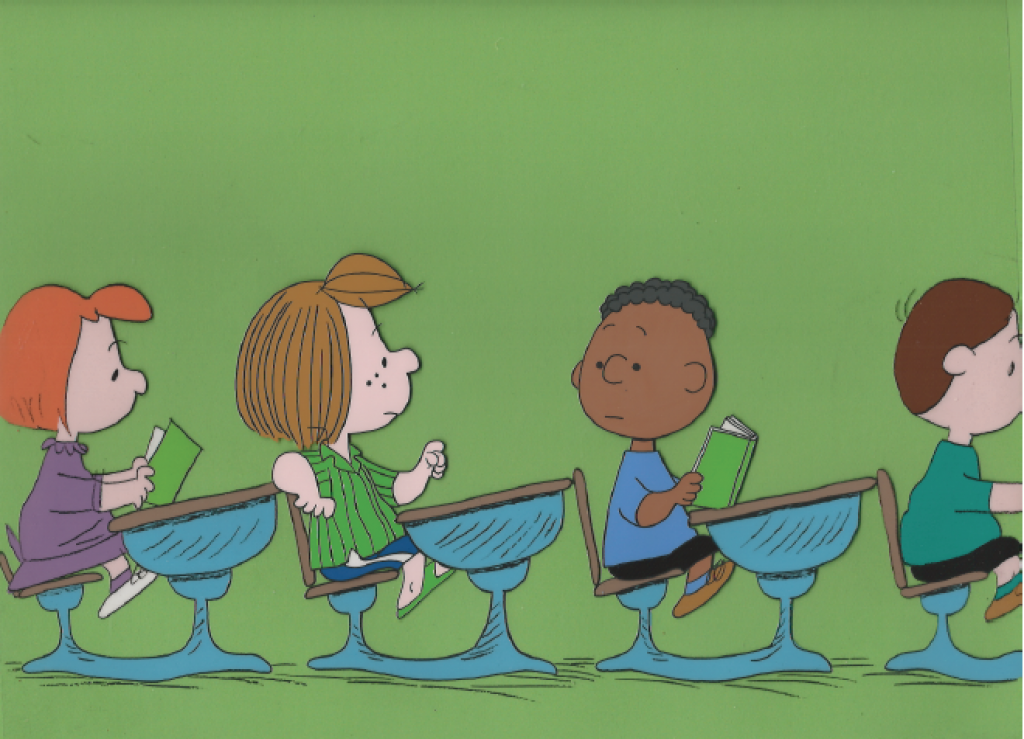

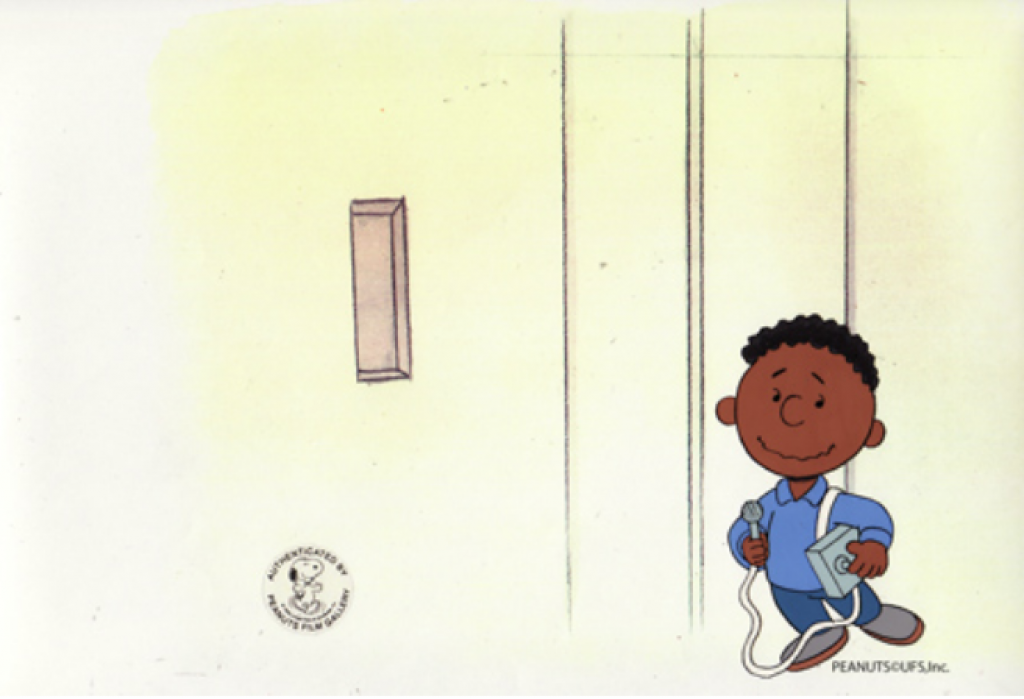

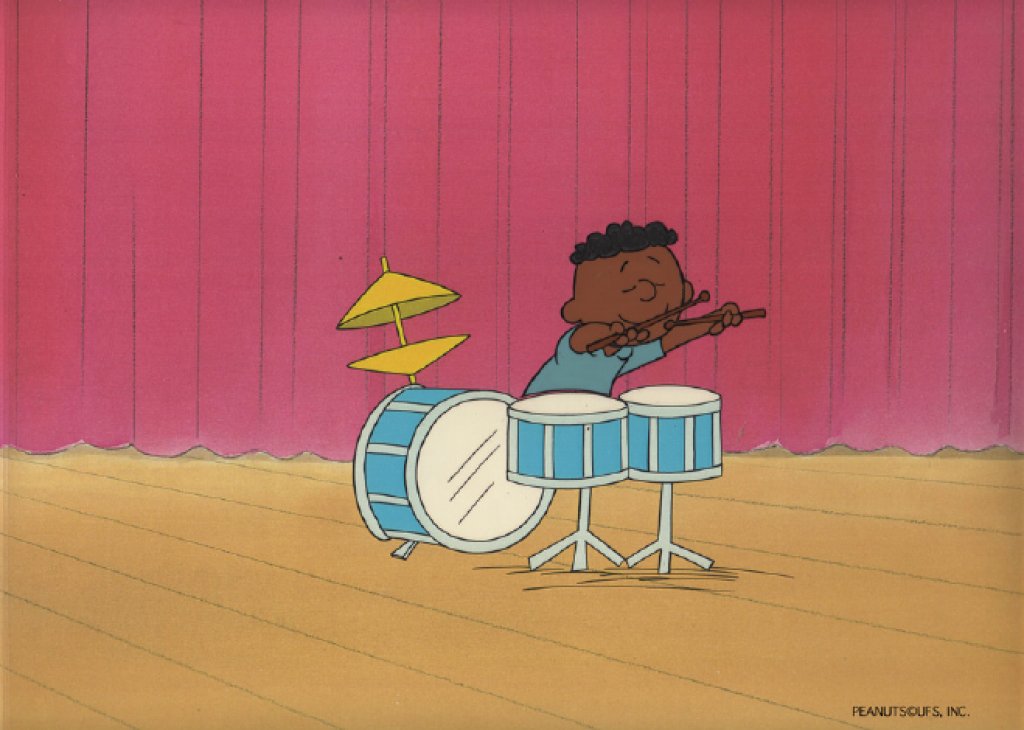
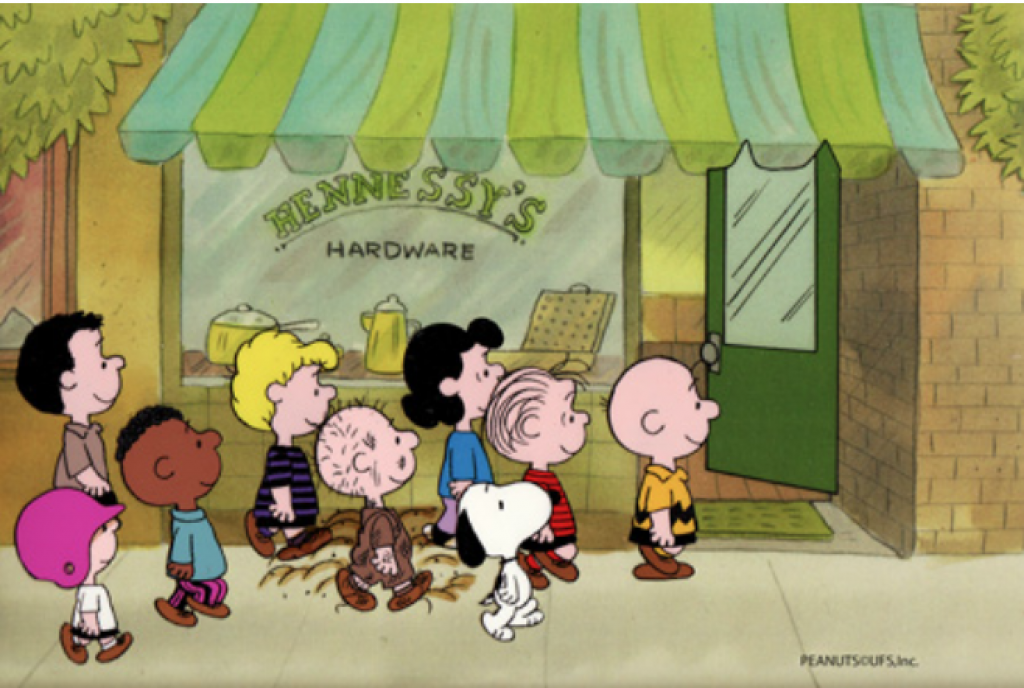
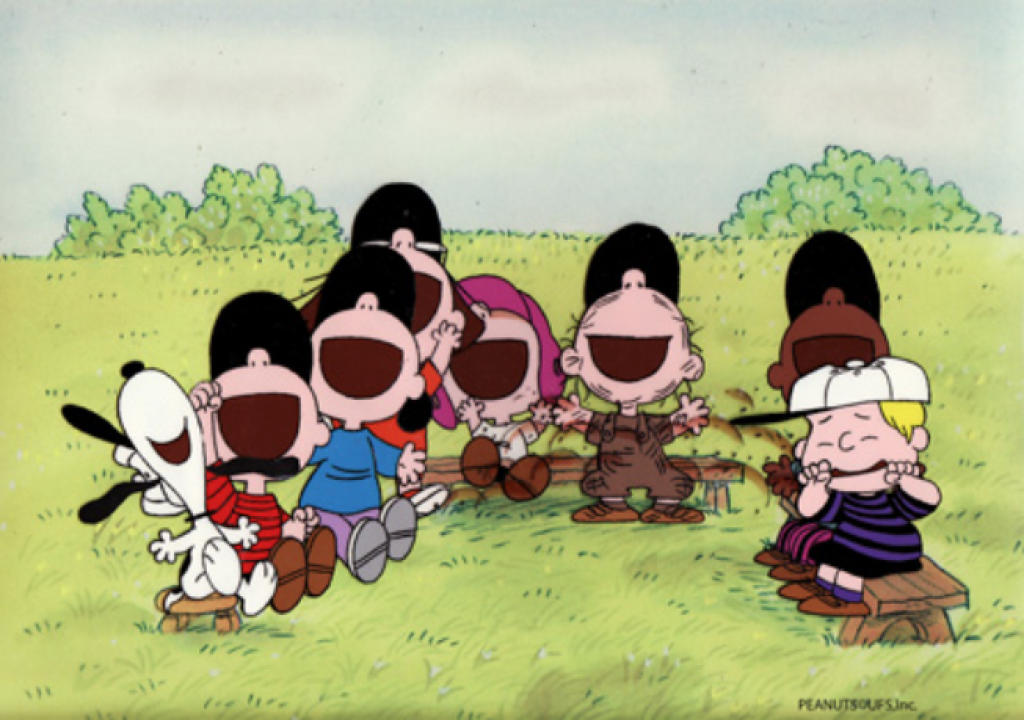
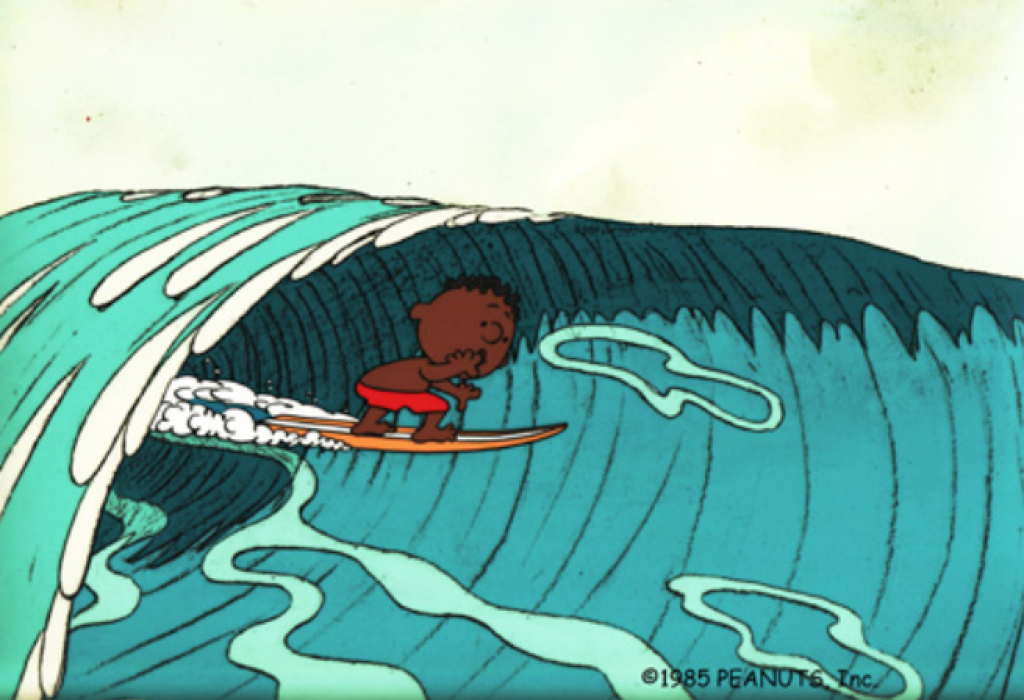
In 1968, at the time of Franklin’s debut, had been a very difficult year for America, and this is especially true for Black Americans. Martin Luther King had been assassinated on April 4th, leading to widespread riots across the country. Robert Kennedy, a huge proponent of civil rights, was gunned down on June 6th. The Vietnam War was in the news every day, and the news wasn’t good.
It was in the midst of all that a retired LA school teacher and mother of 3, Harriett Glickman, appealed to Charles Schulz in a letter to the Peanuts creator.

She explained her inspiration for the letter in an interview at the Charles M. Schulz Museum: “It isn’t something that you wake up and decide to do just one day. My sister and I were both raised in a home where our parents, just through the way they lived, kept us understanding our role in the world and our sense of responsibility for others. It was the kind of thing we took into our consciences without having to be taught. It was just the values we had, the respect for other people, and all of which we learned from our parents. In the early days, our parents marched in demonstrations for the rights for workers and for unions. There were so many issued throughout the years that needed my involvement. Then I had small children. Writing a letter was what I could do at the time. However, that letter was the result of my whole life. It was seeing racism in this country, knowing that no matter what there was ugliness and violence, and my letter was nothing compared to the little girl who stood in the doorway to integrate a school with crowds of people spitting at her.”
Schulz wrote back to Glickman, and his response was that he didn’t think he was qualified. He doubted he could write a Black character without unintended condescension.
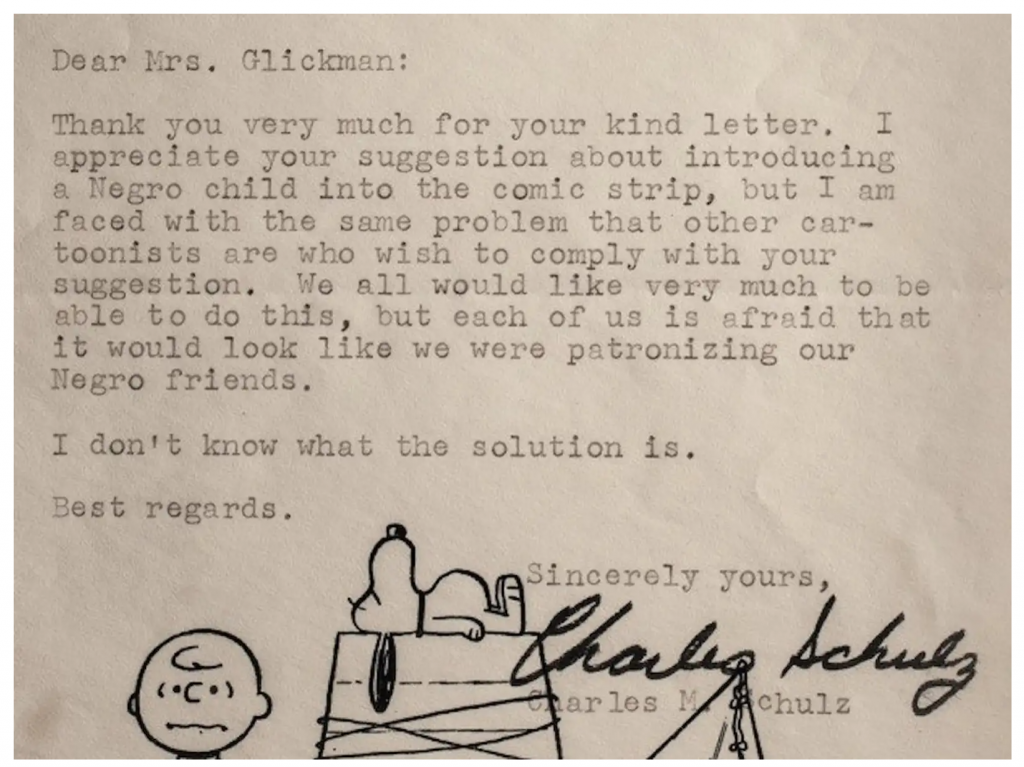
Seeing he was hesitant, she enlisted two Black friends and parents, Ken Kelly and Monica Gunning. Here’s the letter from Ken Kelly, who was a space engineer who worked on the Surveyor lunar vehicle, and later became an important LA housing advocate. He died on February 27th, 2021 at 93.
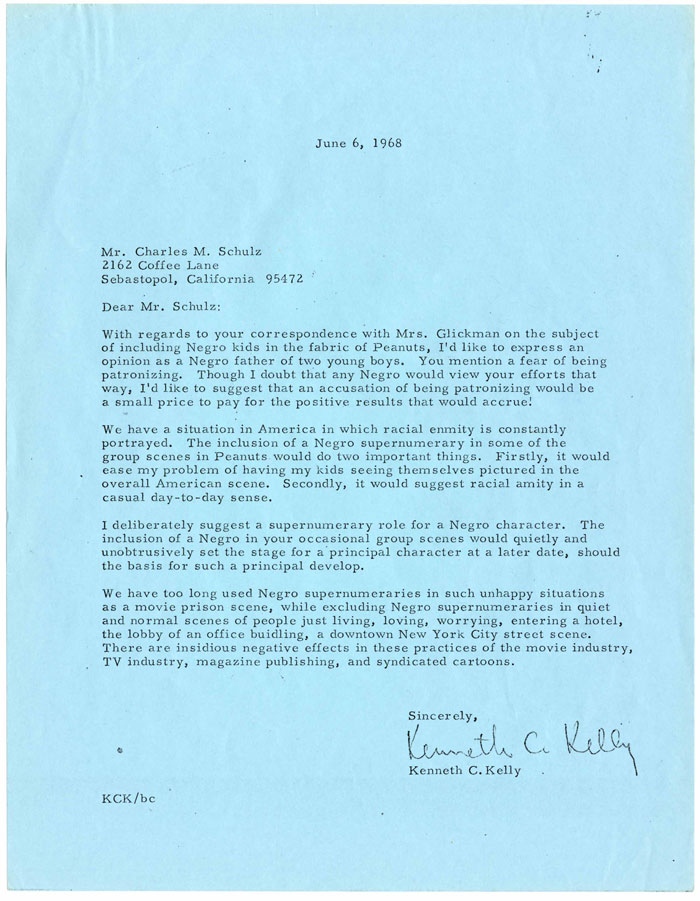
It was the combination of these entreaties that led to Schulz creating Franklin. He let Glickman know he’d gotten the other letters, and that she’d be pleased with an upcoming Peanuts story. When United Features Syndicate questioned whether it was a good idea to run the strips, Schulz told them to run the strips as is, or he’d quit. On July 31st, 1968, they ran Franklin’s debut.
The addition of Franklin to the Peanuts gang was not without controversy, and it has continued to this day. The way the characters in the strip speak has a sort of old world charm and simplicity that can be taken entirely the wrong way, or just doesn’t work when dealing with the complex issues of racism, privilege, and inclusion. There’s argument around some of the depictions in the animated specials, famously, when Franklin was seated on his own side of the table at Thanksgiving in A Charlie Brown Thanksgiving, or the fact that he leads the kids in a dance to a rap song in It’s Spring Training, Charlie Brown. In the case of the Thanksgiving special, there aren’t any animators alive to talk about how they laid out the scene, so it allows people who know nothing about animation to speculate. Suffice to say both Charles Schulz and Bill Melendez were known for giving thought, such as it was at the time, to diversity and inclusion, and Melendez, who hired men and women of all backgrounds, was universally considered the nicest man in animation. The dancing in Spring Training, (which was released in 1992) made the special a product of its time, and was meant to appeal to all kids of the era.
Based on the repeated backlash that began in 1974 and continues to this day, Schulz was right about the difficulty of white artists representing a Black character, but he knew the power that 100 million readers could have on systemic or societal change. Although he always said he just wanted to make a funny strip, he tried to make a difference when he could. There’s no denying the power and influence of seeing a Black child represented in print and onscreen to the many many Black kids who read the comic strip, or watched the TV specials.
In fact, one such kid, Robb Armstrong, who saw the first strip in 1968 as a 9 year old, was inspired to a career in comic art from seeing a Black kid that looked like him in print. His comic strip JumpStart has become the most widely syndicated daily strip by an African American in the world. When his strip was first syndicated, he learned he was in great company, as Peanuts was also published through United Feature Syndicate. He asked to meet one of his artistic heroes, Schulz, and was turned down by the higher ups at the syndicate. Several years later they did meet, and became very good friends. In the 1990s, when a video was being released in which all the characters needed surnames, Schulz asked his then longtime friend Robb Armstrong if he could give his surname to Franklin, who was honored, and thus the iconic comic character became Franklin Armstrong.
In the new documentary about Charles Schulz called Who Are You, Charlie Brown?, a number of well-known personalities, including Al Roker, talk about Franklin’s influence, and the importance of seeing a Black kid as part of the Peanuts gang. A comic strip that over a hundred million people read every week had the potential to have a huge influence over how kids saw the world, and each other. Schulz knew he could make a difference, and even over his own concerns, he created Franklin as the cool, smart, talented, kind Black kid who deserved being treated with appreciation, respect and love. To both Black and white kids who grew up reading him in the funnies and watching him in the specials, he had an enormous impact.
Here are all the films in which Franklin makes an appearance:
- Snoopy, Come Home (1972) [silent]
- There’s No Time for Love, Charlie Brown (1973)
- A Charlie Brown Thanksgiving (1973)
- Be My Valentine, Charlie Brown (1975) [silent]
- It’s Arbor Day, Charlie Brown (1976) [silent]
- Race for Your Life, Charlie Brown (1977)
- It’s Your First Kiss, Charlie Brown (1977)
- It’s Magic, Charlie Brown (1981)
- Is This Goodbye, Charlie Brown? (1983)
- It’s Flashbeagle, Charlie Brown (1984) [silent]
- Snoopy’s Getting Married, Charlie Brown (1985)
- The Charlie Brown and Snoopy Show (1985)
- You’re a Good Man, Charlie Brown (TV special) (1985) [silent]
- Happy New Year, Charlie Brown! (1986) [silent]
- Snoopy!!! The Musical (1988) [silent]
- This Is America, Charlie Brown (1988-1989)
- Why, Charlie Brown, Why? (1990) [silent]
- It’s Spring Training, Charlie Brown (1992)
- It’s Christmastime Again, Charlie Brown (1992)
- You’re in the Super Bowl, Charlie Brown (1994) [silent]
- It Was My Best Birthday Ever, Charlie Brown (1997) [silent]
- It’s the Pied Piper, Charlie Brown (2000) [silent]
- A Charlie Brown Valentine (2002) [silent]
- I Want a Dog for Christmas, Charlie Brown (2003)
- The Peanuts Movie (2015)
As with all art, in which sometimes it takes a while to get the nuances exactly right, the art of Franklin as a character continues to be a work in progress. Speaking of progress, times change. The creation of Franklin was something to celebrate in 1968, but in both print and animation there were bound to be growing pains along the way, especially, as Schulz himself said, when a white artist is bringing a Black character to life at such a volatile time in US history. In the latest feature, 2015’s The Peanuts Movie, Franklin is just one of the gang. He’s as smart as ever (he’s in the student council) and organized (he’s running the school talent show), but he isn’t singled out, and his ‘Blackness’ isn’t part of the story. Regardless, he’s the favorite character of many a Peanuts fan, and is a legitimately important figure in the civil rights movement.
We love you, Franklin.

